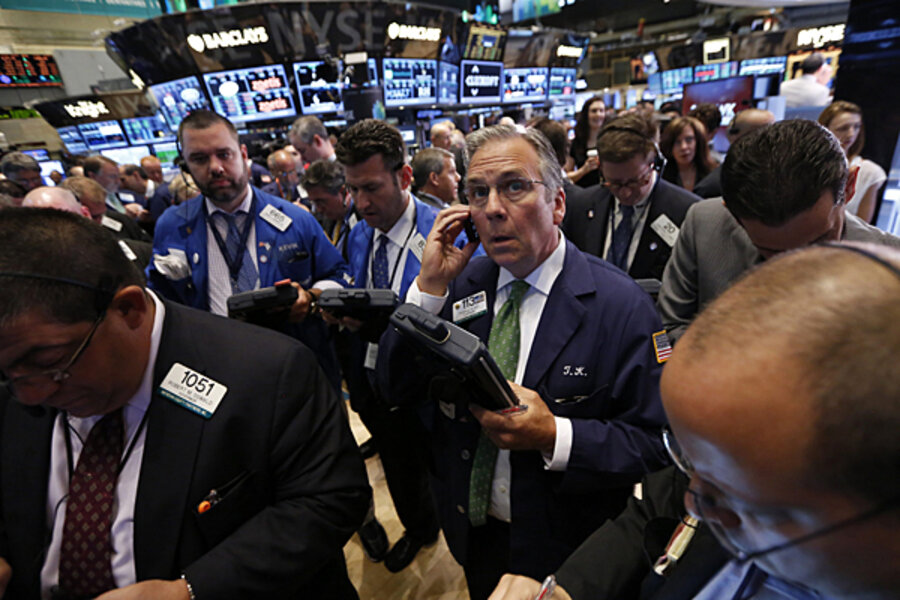Stocks rise for second day straight
Loading...
| New York
The U.S. economy slowed down, but the stock market went up for a second day in a row on Wednesday.
The gains were decisive. The Dow Jones industrial average jumped 149.83 points, or 1 percent, 14,910.14. All 10 sectors in the Standard & Poor's 500 index were higher.
The appraisal of the economy was just as clear, and contrary: The government reported that the economy grew at an annual rate of 1.8 percent in the first three months of the year, down significantly from the previous estimate of 2.4 percent and anemic by the standards of many economists.
It might seem counterintuitive for stocks and growth to go in opposite directions, but analysts said it made sense.
The slower growth made traders and investors less anxious that the Federal Reserve might act too soon to end measures aimed at propping up the economy and stock market. Investors also seemed to realize that they dumped too many stocks last week, when they panicked after the Fed outlined plans on how it might eventually end the measures.
"The sell-off was a little bit overdone," said David Coard, head of fixed-income sales and trading at Williams Capital Group in New York. "Sometimes you've got to take a breather."
Tuesday and Wednesday marked the stock market's first two-day gain since the Fed gave its timetable for throttling back its economic stimulus a week ago. That announcement, which followed weeks of speculation about its next move, had spooked markets, causing stocks to gyrate and bond yields to spike.
The Standard & Poor's 500 rose 15.23, or 1 percent, to 1,603.26. The Nasdaq composite index gained 28.34, or 1 percent, to 3,376.22.
The yield on the 10-year Treasury note fell for the first time since June 14, slipping to 2.54 percent from 2.61 percent.
The price of gold plunged $45.30, or 3.6 percent, to $1,229.80 an ounce, its lowest price in three years.
The markets have been unpredictable for weeks, ever since Fed Chairman Ben Bernanke started hinting that a pullback in Fed stimulus programs would start soon. In the last 25 trading days, the Dow has ricocheted through 17 triple-digit swings, split almost evenly between ups and downs.







